Inside OCZ's Factory: How SSDs Are Made
by Kristian Vättö on May 20, 2015 8:30 AM ESTPackaging
Once the drive has exited the validation station without any errors, it's considered to be fully functional and is ready to be packaged.
Before the drive is put inside the retail package, the labels are put on the metal chassis. Currently this is done manually and requires extreme precision from the worker, but this is an area OCZ is looking to automate to reduce costs and increase the throughput of the factory.
The folding of the cardboard retail boxes has already been automated and is done by the machine above.
The drives and accessories are put inside the retail box by hand and the last step in the process is to wrap the complete box in plastic. The wrap is folded over itself, resulting in a pocket where the retail package is pushed into. The package will then go through a heat tunnel, which shrinks the plastic a creates a tight wrap.
The retails boxes are then put inside 10-drive shipping boxes. The shipping boxes and the black holders have actually been designed by OCZ and are something that Mr. Van Pattern introduced shortly after joining the company. The new design is much more tolerable to drops and pressure in order to keep the retail packages cosmetically in tact and the 10-drive size is easy to ship around. OCZ does drop tests periodically to ensure that both the retail package as well as the shipping box quality hasn't degraded and the drives are safe.
The last stop for the drive before it's shipped out is, of course, the warehouse, which also concludes our factory tour.
Final Words
First of all, I'd like to thank OCZ and PTI for giving us the exclusive inside look of their factory. Usually we only get to see the final product, but not the steps that are taken to develop and build the drive. As we saw, the actual assembly process of an SSD is not very complex, but there is a tremendous amount of continuous testing to keep the quality high. Some tests, such as the box drop test, may seem a bit redundant, but ultimately it's these little things and aspects that build a high quality product.
That said, I'm not an engineering or manufacturing expert, so it would be wrong for me to "review" OCZ's processes. What I can say, though, is that OCZ's attitude towards quality and reliability has completely changed. In the past it wasn't unheard of that a product would only spend roughly three months in development before entering mass production, but now even the qualification phase of the development process is typically longer.
All in all, the new OCZ is well aware of its questionable quality reputation from the past and is now doing everything it can to build the trust back. It won't happen overnight, but opening up the whole development and manufacturing process is a way of showing that OCZ has nothing to hide when it comes to quality.


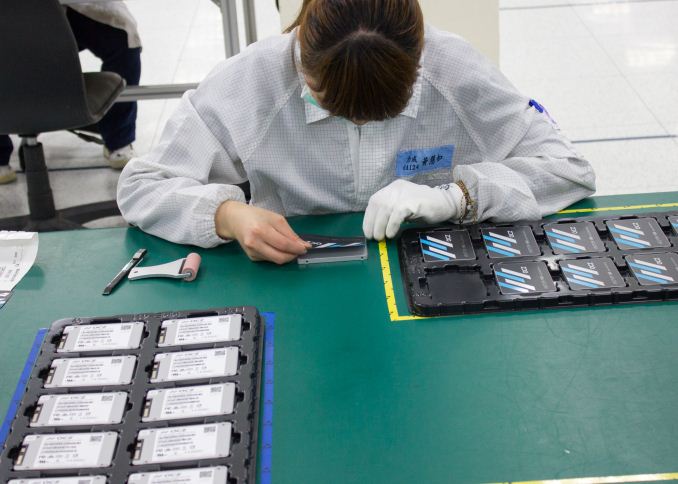
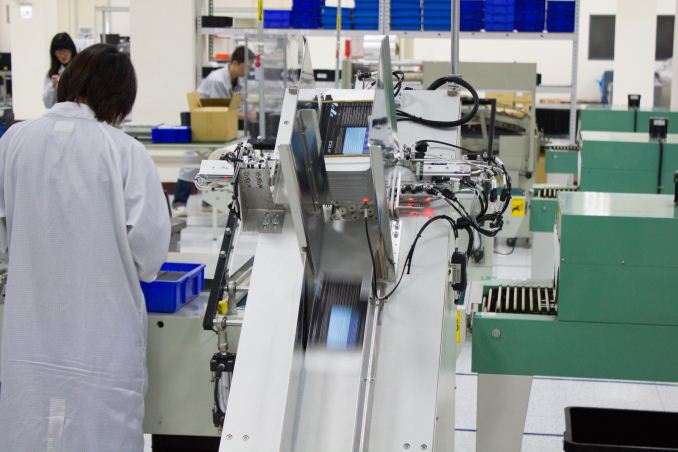
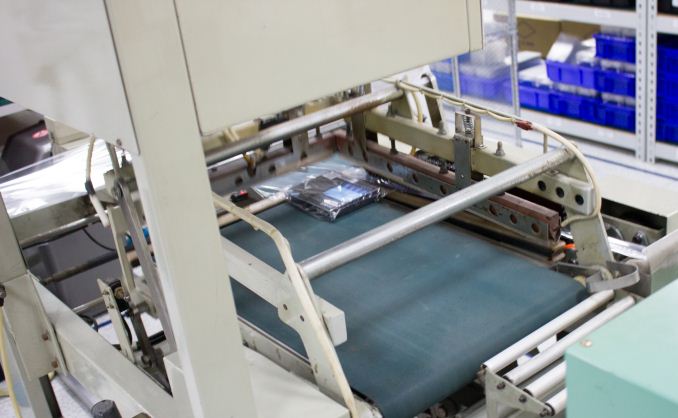
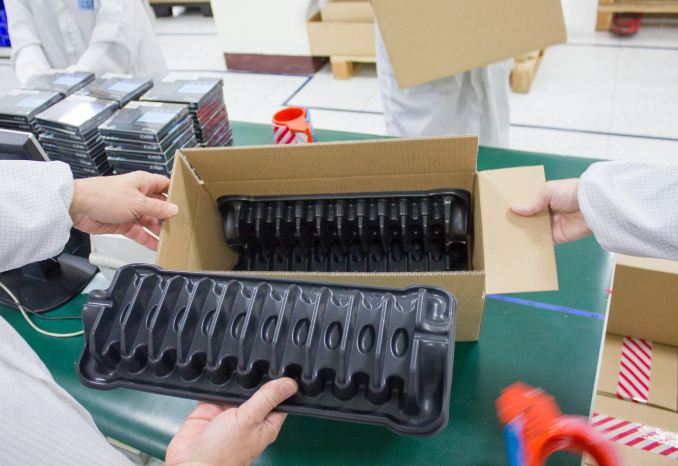
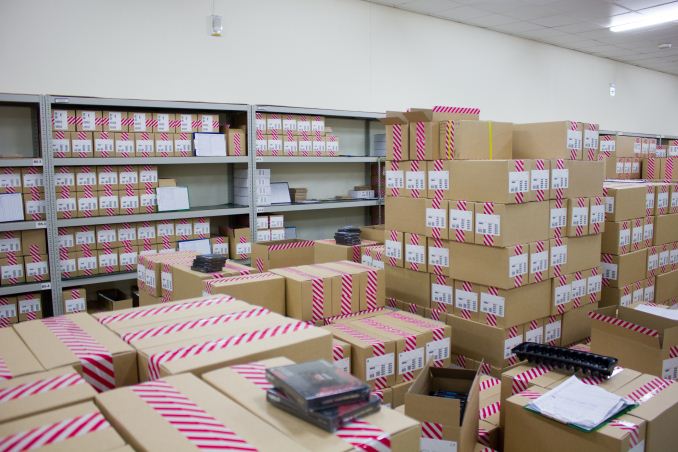








64 Comments
View All Comments
dreamslacker - Thursday, May 21, 2015 - link
Not quite. You can only do that if the entire process is automated and centrally controlled.Their SMT line uses tape reels for parts, if you wanted to pre-test NAND flash before mounting them, you will need to extract, test and reinsert into the tape reels (or trays) in a specific order.
The mapping information from testing will also need to be entered into a centralized database. The reels or trays will then need to be sent to the SMT line in the same specific order and the circuit boards, once soldered, will also have to be sent to the firmware flashing racks in order as well. Otherwise, there is no way of telling which board contains which flash chips.
Again, they have to extract and send for labeling in a specific order so that the label serials will match what is programmed into the drive.
All of these basically means you need to invest into a completely automated line with conveyor belts, robotic arms, automatic labeling machines, database servers and apps to integrate.
It's simply more economical, for a smaller scale operation like this, to solder first and ditch the defective units as long as your components do not come with a high defect rate.
caleblloyd - Thursday, May 21, 2015 - link
I think the article got posted Tuesday morning then taken down a few minutes later. But all good now!dreamslacker - Wednesday, May 20, 2015 - link
Odd that they intend to both shift towards a rack-based system and also MST at the same time.A decent rack type system would be running ASICs that offload the test regime from the host computer(s) and can be configured on-the-fly to run both drive tests as well as programming.
DanNeely - Wednesday, May 20, 2015 - link
Even if most of the testing can be done on board the drive itself using the MST; they still need to plug the drives into something else to verify the sata connection and to read out the results of the MST. MST will just let them swap new batches of drives into the tester more frequently.dreamslacker - Thursday, May 21, 2015 - link
MST is normally used when you have reduced capability test chambers / racks. For mechanical drives that need to be tested under high temperature conditions, it allows them to dump a load of drives into what is effectively a large oven with triggered power supplies for thermal tests.If they are utilizing 'smarter' racks, such as the Xyratex (now owned by Seagate) modules, then the ASICs will handle everything and loading/ unloading MST firmware manually isn't needed.
The primary difference is that a smarter ASIC based unit can automatically run the tests, dump the logs and prep the drive for sale (clear the test data, reset the counters etc) whereas MST requires the worker to extract the drives and send them to another workspace to have the MST logs dumped and the production firmware loaded in.
The ASIC based test racks still connect to a computer, you just have the ability to use a single computer for more drives (for Seagate's Xyratex modules, it's 1 computer to 192 drives). They are, however, headless units and are fully controlled by a central server via CGI & Python scripts.
Very little user intervention is required on their fully automated line except when they need to re-configure the racks to accept modules with different drive interfaces. This is done by a single terminal console where they telnet into the machine handling the modules and edit the configuration file by VI.
GTan36 - Wednesday, May 20, 2015 - link
Bought a OCZ Arc100 240GB SSD last week for my first PC build. It's really fast and you can tell the drive is high quality and manufactured well. Boots Windows 8.1 in less than 15 seconds and was pretty affordable.It's nice to see OCZ becoming a quality brand.
r3loaded - Wednesday, May 20, 2015 - link
Excellent article, it was like a written version of a How It's Made episode!Phynaz - Wednesday, May 20, 2015 - link
Presented by Anandtech, a division of OCZ Marketingxthetenth - Wednesday, May 20, 2015 - link
Yes, this tour of a company's factories and discussion of how they make things is different than all the others becauseMrSpadge - Wednesday, May 20, 2015 - link
Don't fault AT for OCZ being more open than other manufacturers.